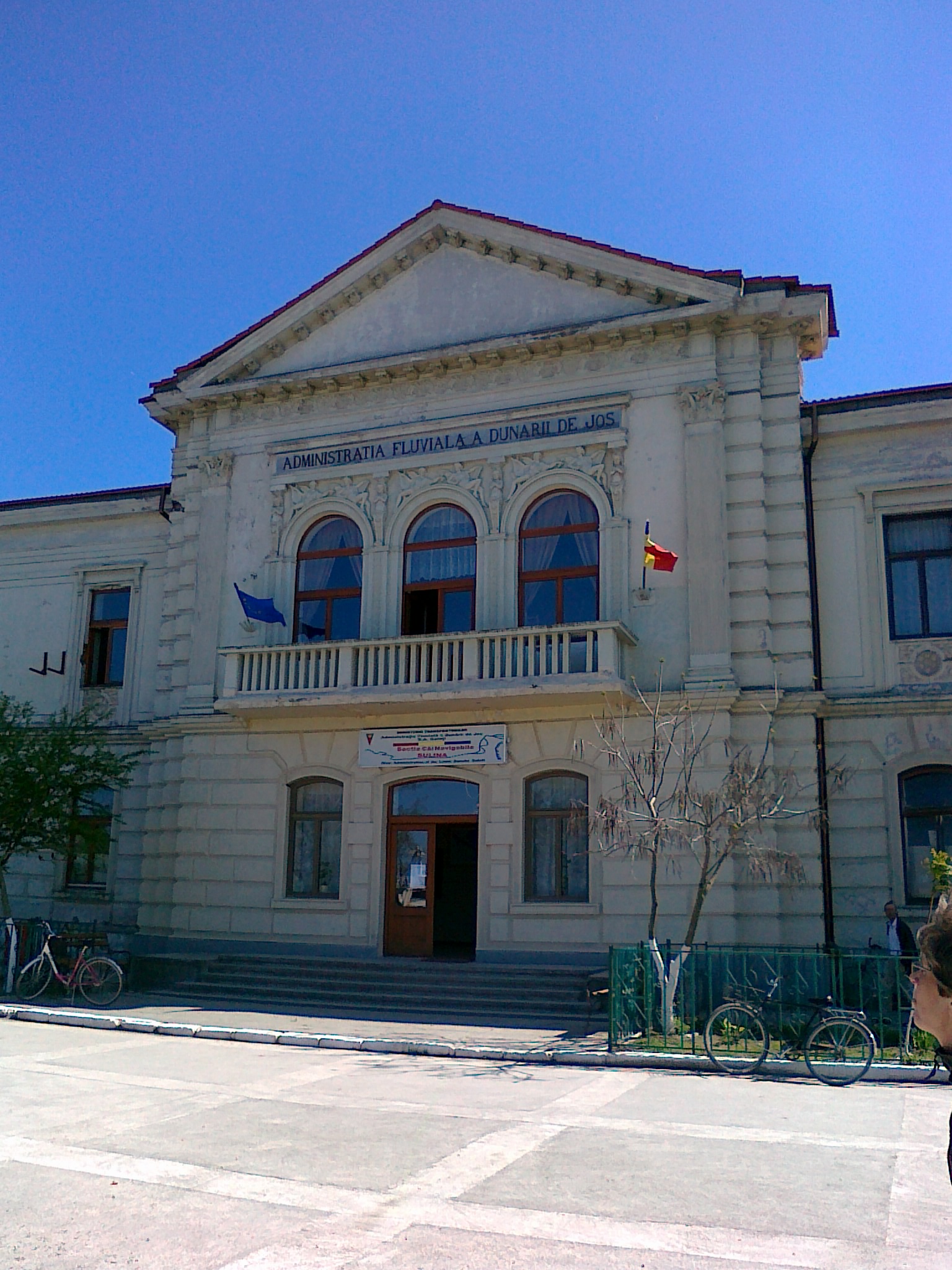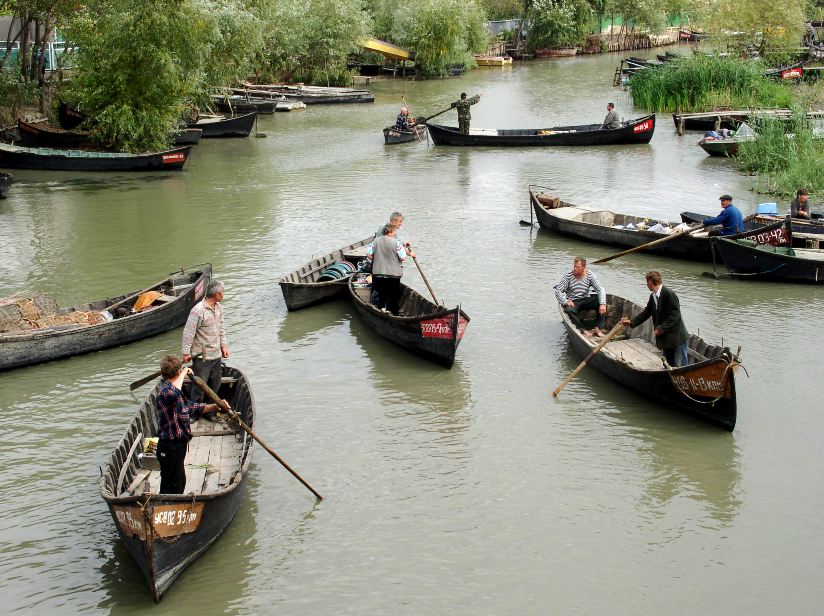|
Periprava
C.A. Rosetti is a commune in Tulcea County, Northern Dobruja, Romania. The commune is named for writer and politician Constantin Alexandru Rosetti. It is composed of five villages: C.A. Rosetti, Cardon, Letea, Periprava and Sfiștofca. At the 2011 census, 65.7% of the inhabitants were Romanians, 24.3% Russian Lipovans and 9.8% Ukrainians. The same census found that Letea ( Russian: Летя, ''Letya'') village had 348 inhabitants, down from 404 in 2002. Of those, 399 were native speakers of Romanian and 5 of Ukrainian. The painter (1883–1961) was born in Letea. The Periprava labor camp The Periprava labor camp was a labor camp operated by the Romanian communist regime. The camp, located near the village of Periprava in the Danube Delta, held up to 2,000 prisoners. According to a study done by the International Centre for Stud ... operated near the village of Periprava during communist rule. Notes References * Communes in Tulcea County Localities in Northern Do ... [...More Info...] [...Related Items...] OR: [Wikipedia] [Google] [Baidu] |
Periprava Labor Camp
The Periprava labor camp was a labor camp operated by the Romanian communist regime. The camp, located near the village of Periprava in the Danube Delta, held up to 2,000 prisoners. According to a study done by the International Centre for Studies into Communism, 8.23% of political prisoners in Communist Romania did time at Periprava. In the literature on communist prisons and camps in Romania, the Periprava labor camp is described as one of the harshest places of imprisonment. In view of the extremely severe detention and work regime, sheer terror, and high mortality, the camp is known among former detainees as a true "death camp". The labor camp The main facility of the labor camp was next to Periprava village; other detention facilities in the area were at Sfiștofca, Grindu, Letea, C. A. Rosetti, and Bac. In the early 1950s, Periprava was a section of the Chilia Formation; it became an independent prison on July 1, 1957. The official designation for the camp was Facilit ... [...More Info...] [...Related Items...] OR: [Wikipedia] [Google] [Baidu] |
Tulcea County
Tulcea County () is a county ( județ) of Romania, in the historical region Dobruja, with the capital city at Tulcea. It includes in its northeast corner the large and thinly-populated estuary of the Danube. Demographics In 2011, Tulcea County had a population of 201,462. The population density was 23.7/km², the lowest among the counties of Romania, due to the inclusion within the area of the lowly-populated Danube estuarial wetlands. * Romanians - 89.13% * Lipovans - 5.41% * Turks - 0.93% * Romani - 1.87% * Greeks - 0.65% In the Danube Delta there is an important community of Russians and Lipovans. In the south of the county there are communities of Turks. The region once was a centre of Islam in Romania. Geography The county has a total area of . The most significant feature of Tulcea County is the Danube Delta, which occupies about 1/3 of the entire surface and is located in the North-East side of the county. The Delta has three main branches: the Sulina bran ... [...More Info...] [...Related Items...] OR: [Wikipedia] [Google] [Baidu] |
Buzău County
Buzău County () is a county ( județ) of Romania, in the historical region Muntenia, with the capital city at Buzău. Demographics In 2011, it had a population of 432,054 and the population density was 70.7/km2. * Romanians – 97% * Romani – under 3% declared and others Geography This county has a total area of 6,103 km2. In the North Side there are the mountains from the southern end of the Eastern Carpathians group – the Vrancea Mountains and the Buzău Mountains with heights over 1,700 m. The heights decrease in the South and East passing through the subcarpathian hills to the Bărăgan Plain at about 80 m. The main river crossing the county is the Buzău River which collects many small rivers from the mountains and flows to the East into the Siret River. Neighbours * Brăila County to the east. * Prahova County and Brașov County to the west. * Covasna County and Vrancea County to the north. * Ialomița County to the south. Economy The predo ... [...More Info...] [...Related Items...] OR: [Wikipedia] [Google] [Baidu] |
Northern Dobruja
Northern Dobruja ( ro, Dobrogea de Nord or simply ; bg, Северна Добруджа, ''Severna Dobrudzha'') is the part of Dobruja within the borders of Romania. It lies between the lower Danube river and the Black Sea, bordered in the south by Southern Dobruja, which is part of Bulgaria. History Around 600 BC, the Greeks colonized the Black Sea shore and founded numerous fortresses: Tomis (today's Constanta), Callatis, Histria, Argamum, Heracleea, Aegysus. Greeks have commerce with dacians who lived there on main land. Dobruja became a Roman province after conquest of Dacian Tribes. One of the best preserved remnants of this period is the Capidava citadel. Between the 7th and 14th century, Dobruja was part of the First Bulgarian Empire and the Second Bulgarian Empire. For a long period in the 14-15th century, Dobruja became part of Wallachia. The territory fell under Ottoman rule from the mid-15th century until 1878, when it was awarded to Romania for its role in the 18 ... [...More Info...] [...Related Items...] OR: [Wikipedia] [Google] [Baidu] |
Romania
Romania ( ; ro, România ) is a country located at the crossroads of Central Europe, Central, Eastern Europe, Eastern, and Southeast Europe, Southeastern Europe. It borders Bulgaria to the south, Ukraine to the north, Hungary to the west, Serbia to the southwest, Moldova to the east, and the Black Sea to the southeast. It has a predominantly Temperate climate, temperate-continental climate, and an area of , with a population of around 19 million. Romania is the List of European countries by area, twelfth-largest country in Europe and the List of European Union member states by population, sixth-most populous member state of the European Union. Its capital and largest city is Bucharest, followed by Iași, Cluj-Napoca, Timișoara, Constanța, Craiova, Brașov, and Galați. The Danube, Europe's second-longest river, rises in Germany's Black Forest and flows in a southeasterly direction for , before emptying into Romania's Danube Delta. The Carpathian Mountains, which cross Roma ... [...More Info...] [...Related Items...] OR: [Wikipedia] [Google] [Baidu] |
Lipovans
, flag = Flag of the Lipovans.png , flag_caption = Flag of the Lipovans , image = Evstafiev-lipovane-slava-cherkeza.jpg , caption = Lipovans during a ceremony in front of the Lipovan church in the Romanian village of Slava Cercheză in 2004 , population = , region1 = , pop1 = 23,487 , ref1 = , region2 = , pop2 = , ref2 = , region3 = , pop3 = , ref3 = , region4 = , pop4 = 700–800 , ref4 = , religions = Old Believers (Eastern Orthodox Christianity) , languages = Russian, Romanian, Ukrainian, Bulgarian , related = Russians , footnotes = The Lipovans or Lippovans (russian: Липовáне; ro, Lipoveni; uk, Липовани; bg, Липованци) are ethnic Russian Old Believers living in Romania, Ukraine, Moldova and Bulgaria who settled in the Principality of Moldavia, in the east of the Principality of Wallachia (Muntenia), and in the regions of Dobruja and Budjak during the 17th and 18th centuries. According to the 2011 Romanian census, ... [...More Info...] [...Related Items...] OR: [Wikipedia] [Google] [Baidu] |
Russian Language
Russian (russian: русский язык, russkij jazyk, link=no, ) is an East Slavic languages, East Slavic language mainly spoken in Russia. It is the First language, native language of the Russians, and belongs to the Indo-European languages, Indo-European language family. It is one of four living East Slavic languages, and is also a part of the larger Balto-Slavic languages. Besides Russia itself, Russian is an official language in Belarus, Kazakhstan, and Kyrgyzstan, and is used widely as a lingua franca throughout Ukraine, the Caucasus, Central Asia, and to some extent in the Baltic states. It was the De facto#National languages, ''de facto'' language of the former Soviet Union,1977 Soviet Constitution, Constitution and Fundamental Law of the Union of Soviet Socialist Republics, 1977: Section II, Chapter 6, Article 36 and continues to be used in public life with varying proficiency in all of the post-Soviet states. Russian has over 258 million total speakers worldwide. ... [...More Info...] [...Related Items...] OR: [Wikipedia] [Google] [Baidu] |
Convorbiri Literare
''Convorbiri Literare'' ( Romanian: ''Literary Talks'') is a Romanian literary magazine published in Romania. It is among the most important journals of the nineteenth-century Romania. History and profile ''Convorbiri Literare'' was founded by Titu Maiorescu in 1867. The magazine was the organ of the Junimea group, a literary society which was established in 1864. The group included aristocratic Moldovans except for Titu Maiorescu. The magazine was first headquartered in Iaşi and later moved to Bucharest. ''Convorbiri Literare'' is published monthly by Convorbiri Literare publishing house. The magazine covered art reviews and translations of literary work. From 1906 the magazine also featured articles on plastic arts. The contributors included Alexandru Tzigara-Samurcaș and Apcar Baltazar among others. The other significant contributors were Mihai Eminescu, Ion Creangă and Ion Luca Caragiale. ''Convorbiri Literare'' has a conservative stance, and its literary rival was ... [...More Info...] [...Related Items...] OR: [Wikipedia] [Google] [Baidu] |
Socialist Republic Of Romania
The Socialist Republic of Romania ( ro, Republica Socialistă România, RSR) was a Marxist–Leninist one-party socialist state that existed officially in Romania from 1947 to 1989. From 1947 to 1965, the state was known as the Romanian People's Republic (, RPR). The country was an Eastern Bloc state and a member of the Warsaw Pact with a dominant role for the Romanian Communist Party enshrined in its constitutions. Geographically, RSR was bordered by the Black Sea to the east, the Soviet Union (via the Ukrainian and Moldavian SSRs) to the north and east, Hungary and Yugoslavia (via SR Serbia) to the west, and Bulgaria to the south. As World War II ended, Romania, a former Axis member which had overthrown the Axis, was occupied by the Soviet Union, the sole representative of the Allies. On 6 March 1945, after mass demonstrations by communist sympathizers and political pressure from the Soviet representative of the Allied Control Commission, a new pro-Soviet government that ... [...More Info...] [...Related Items...] OR: [Wikipedia] [Google] [Baidu] |
Communes In Tulcea County
An intentional community is a voluntary residential community which is designed to have a high degree of social cohesion and teamwork from the start. The members of an intentional community typically hold a common social, political, religious, or spiritual vision, and typically share responsibilities and property. This way of life is sometimes characterized as an "alternative lifestyle". Intentional communities can be seen as social experiments or communal experiments. The multitude of intentional communities includes collective households, cohousing communities, coliving, ecovillages, monasteries, survivalist retreats, kibbutzim, hutterites, ashrams, and housing cooperatives. History Ashrams are likely the earliest intentional communities founded around 1500 BCE, while Buddhist monasteries appeared around 500 BCE. Pythagoras founded an intellectual vegetarian commune in about 525 BCE in southern Italy. Hundreds of modern intentional communities were formed across Europe ... [...More Info...] [...Related Items...] OR: [Wikipedia] [Google] [Baidu] |





